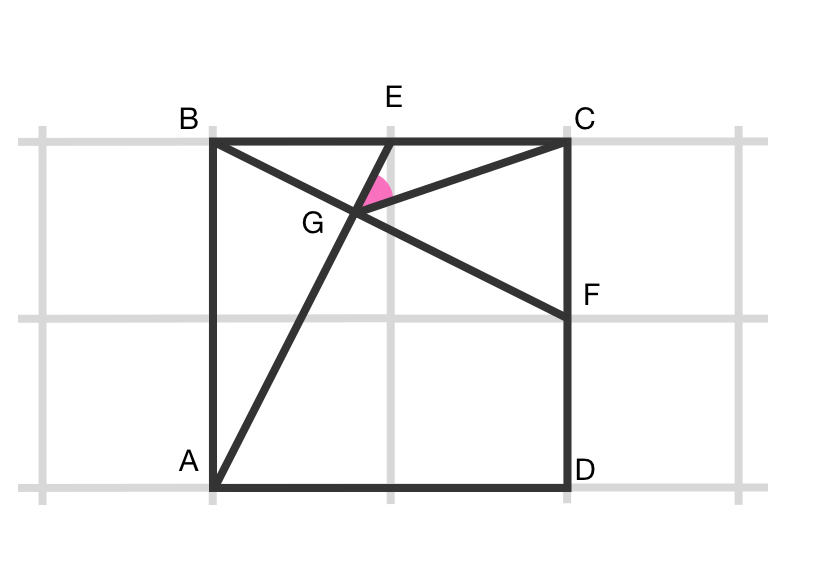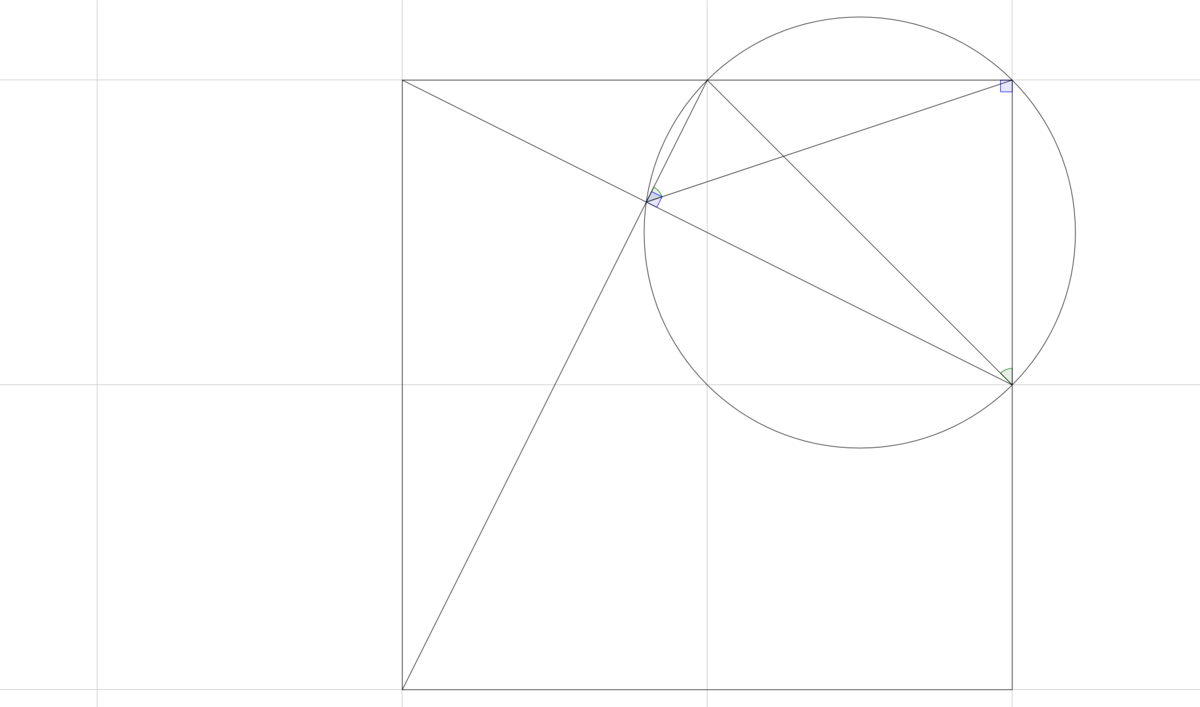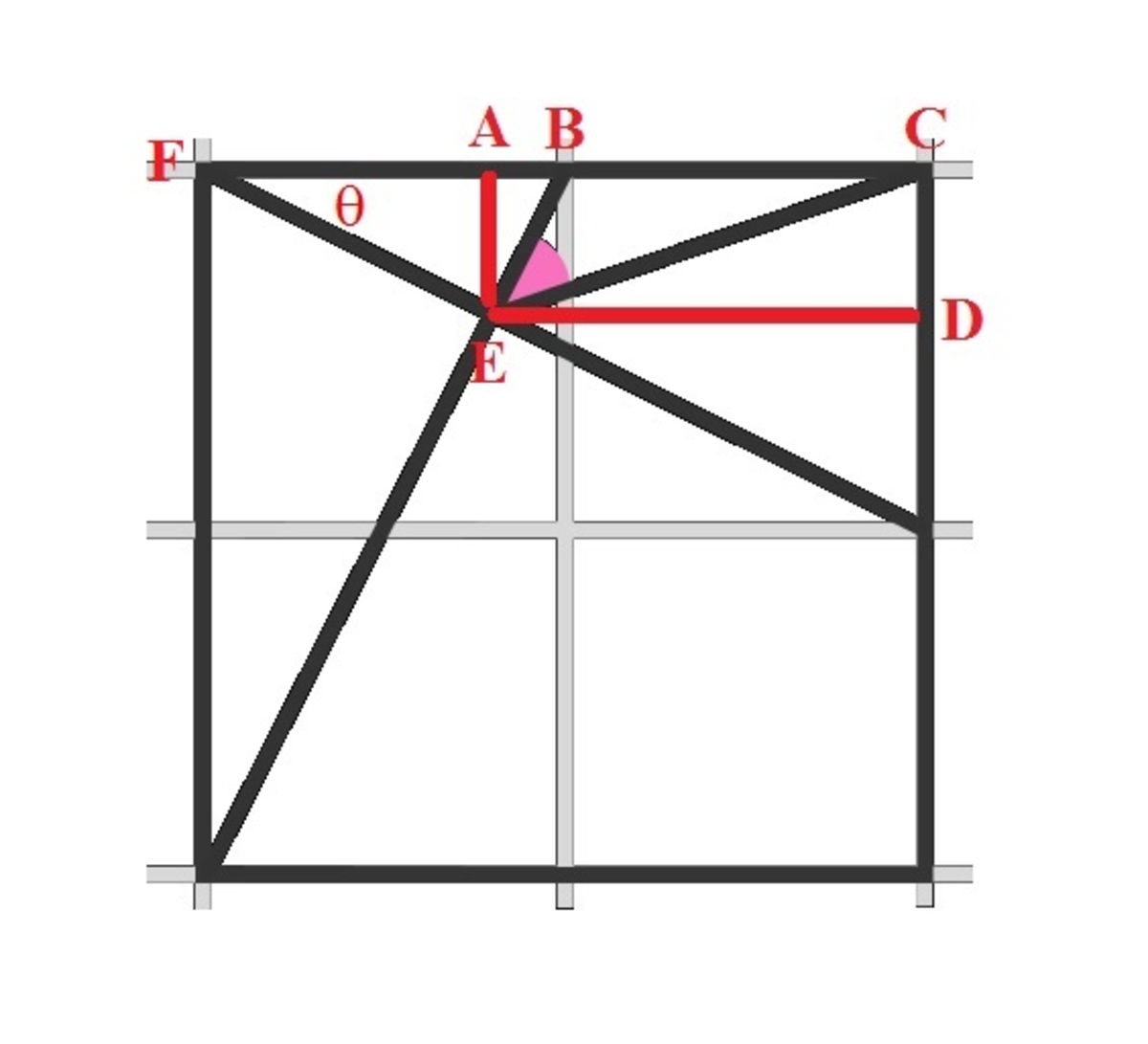Split, Split, Split
The figure above is drawn on a square grid as shown.
Find the marked angle in degrees.
The answer is 45.
This section requires Javascript.
You are seeing this because something didn't load right. We suggest you, (a) try
refreshing the page, (b) enabling javascript if it is disabled on your browser and,
finally, (c)
loading the
non-javascript version of this page
. We're sorry about the hassle.
4 solutions

Label the vertices as shown above.
Observe that
A
E
⊥
B
F
(which can be shown by calculating the product of their tangents)
Since
∠
E
G
F
=
9
0
∘
and
∠
E
C
F
=
9
0
∘
, thus
∠
E
G
F
+
∠
E
C
F
=
1
8
0
∘
so
E
C
F
G
is a cyclic quadrilateral.
Thus,
∠
E
G
C
=
∠
E
F
C
. Since
E
C
F
is an isosceles right triangle, thus
∠
E
F
C
=
4
5
∘
.
Nocturne No.3 Commentary

Notice how a line segment is added to form two right triangles.
The diameter of every right triangle's circumcircle is its hypotenuse. (converse of Thales' theorem )
Since the two right triangles share the same hypotenuse, they share the same circumcircle.
<OR since the opposite angles of the quadrilateral composed of the two right triangles are supplementary i.e. add up to 180 degrees, the vertices of the right triangles are concyclic .>
The required angle can then easily be found via angles in the same segment (angles subtended by the same segment are the same).
Great problem! Could you add more details to your solution so that it's easier for someone to follow it? Thanks.
Log in to reply
Sure thing. I'll add intermediate logical steps and add wiki links to some harder vocabulary.
Is it just me or is there no wiki article on 'Angles in the Same Segment' or the like :)
Log in to reply
Here you go: circles - inscribed angles .
Log in to reply
@Calvin Lin – Awesome! I'll just link that in there as well.

Let ∠ A F E = θ and note that tan θ = 2 1 . Since F A = 1 , then B E = F A sin θ = 5 1 . A B = B E sin θ = 5 1 and A E = B E cos θ = 5 2
Now, we have:
∠ B E C = ∠ B E D − ∠ C E D = tan − 1 A B A E − tan − 1 E D C D = tan − 1 5 1 5 2 − tan − 1 1 + 5 1 5 2 = tan − 1 2 − tan − 1 3 1 = tan − 1 1 + 3 2 2 − 3 1 = tan − 1 1 = 4 5 ∘
A solution without utilising the cyclic quadrilateral :)
